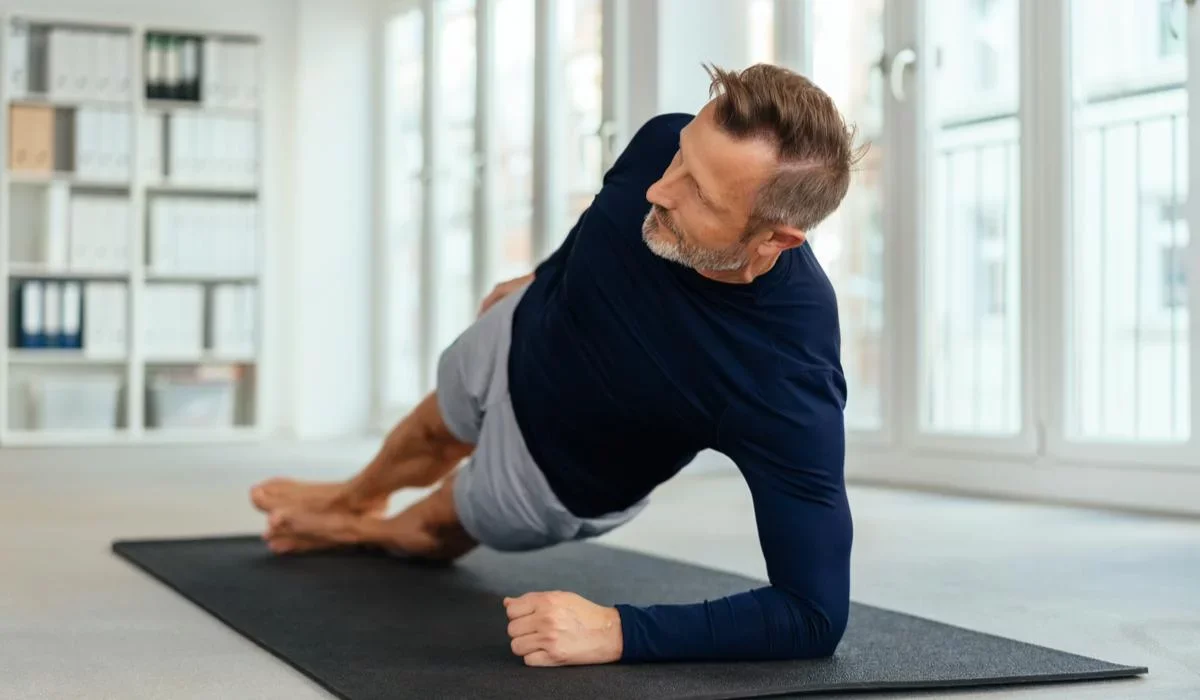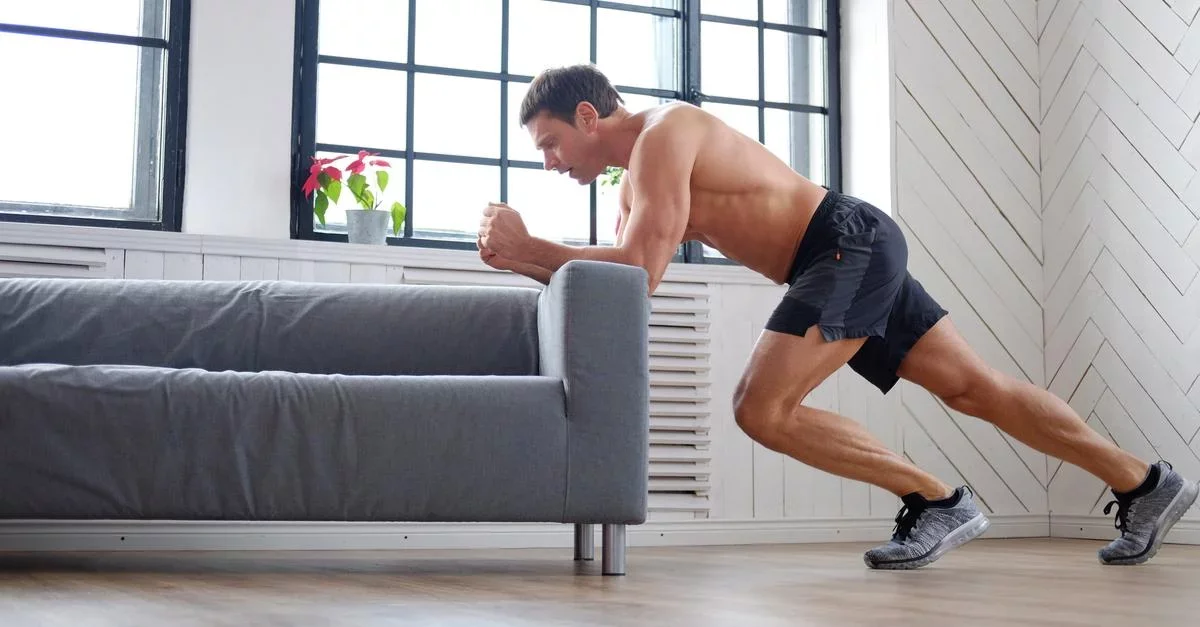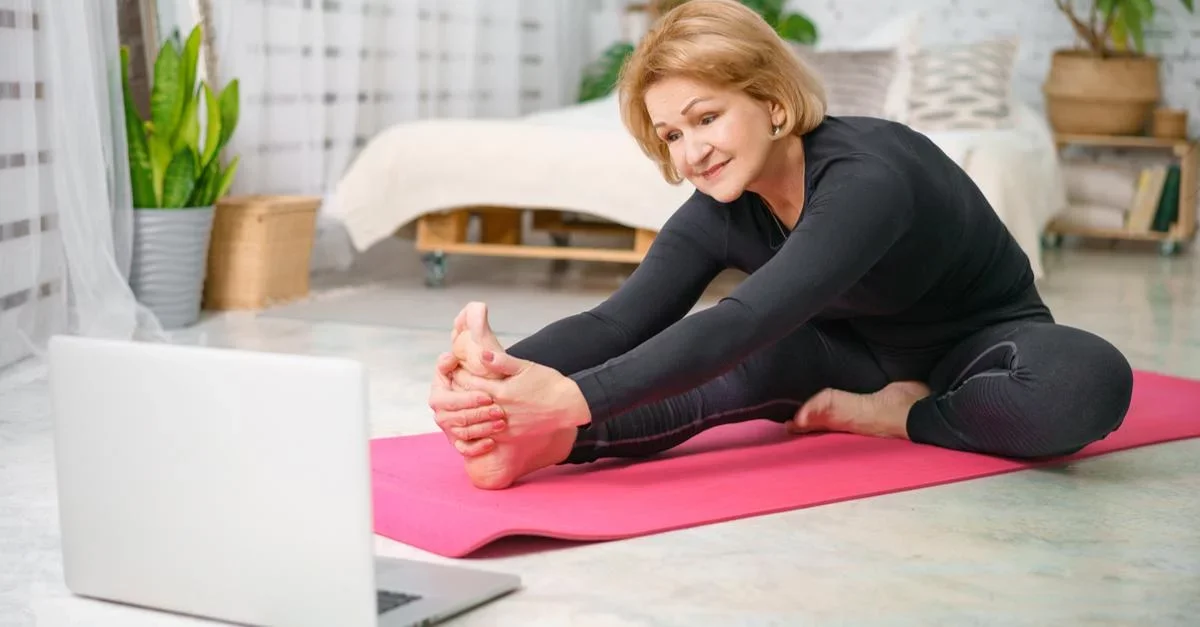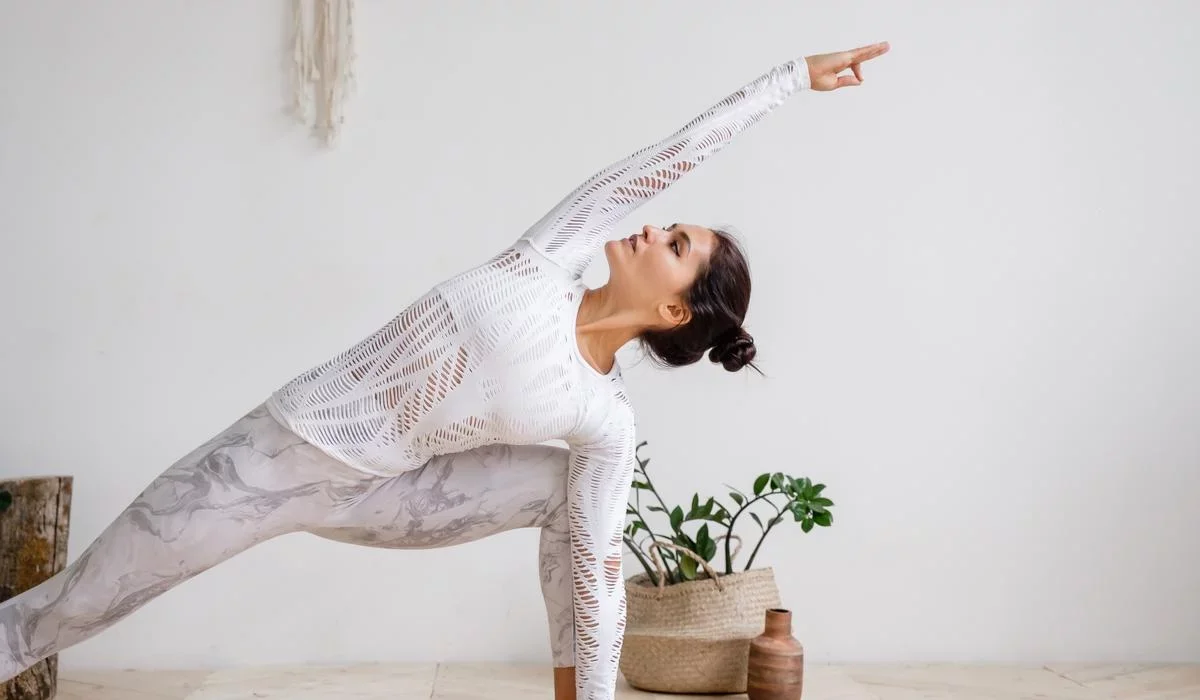How to Design your Home Workout Routine and Keep your Body Moving Despite a Global Pandemic

Since the onset of the novel Coronavirus, also known as COVID-19, all of us have had to significantly alter our daily routines, which may have previously included exercise classes, going to parks and trails, going to the gym, and engaging in other types of fitness activities. However, just because you’re stuck inside doesn’t mean you can and should abandon your fitness goals. You can still maintain an effective routine by making small modifications, trying new things and making use of your own body weight and/or common household items for added resistance.
The U.S. Department of Health and Human Services (HHS) recommends that each American adult get at least 150 minutes of moderate aerobic activity or 75 minutes of vigorous aerobic activity per week, or a combination of both types of activity (Laskowski, 2019). Examples of moderate aerobic activity include power-walking, mowing the lawn or doing housework, and swimming. On the other hand, vigorous activity is more strenuous in nature and gets the heart working harder – activities such as jogging, sprinting, and dancing all qualify. To keep your body in optimal shape, you should try to incorporate both types of activity into your routine multiple times per week.
If you’re just starting on your exercise journey, make sure to take things slow and build up to more strenuous exercises over time. Trying for around 30 minutes of physical activity per day is a good place to start. However, if at any point you feel pain or soreness, listen to your body and make modifications or stop as needed.
Adding Cardio
If you are a cardio-fanatic, you can easily integrate heart-pumping activities into your routine at home by doing jumping jacks, jumping rope, or jumping on a rebounder or trampoline (which can also be a fun activity to do with your kids!). If you have any workout machines like ellipticals or treadmills that you haven’t used in a while, it may be time to dust them off. For those who are in smaller spaces like apartments, doing mountain climbers, burpees and other bodyweight exercises with a cardio element can help you quickly raise your heart rate.
Circuit Training Tips
If you have a garage, you can easily carve out a space and design a circuit training area, which will help you up your cardio game. To get started, you will need little more than your own bodyweight, which is what makes this routine so easy (but also effective).
The “circuit” part of circuit training refers to the fact that you will cycle through a series of exercises multiple times. You are free to customize the circuits in whatever manner you choose, so this exercise is great for those who get bored easily. For example, you can set up your circuit stations by integrating exercises like bodyweight squats, push-ups, walking lunges, dumbbell rows, planks, jumping jacks, pull-ups, and more. One exercise, like pull-ups, counts as a circuit station. You would do each circuit station a few times and repeat in order. During each circuit, you should aim to exercise each muscle group and push yourself to the limit. You can accomplish this by taking little to no breaks in between each circuit station. In fact, circuit training is a suitable method of earning the 75 minutes of vigorous exercise per week as recommended by the HHS.
Sample Circuit Training Series
For those interested in creating an at-home circuit training series, you can begin by creating various stations. The great thing about circuit training is that it is fully customizable depending on your fitness level and what type of equipment you have handy. Additionally, you can easily switch up the circuit training stations so that you can feel like you’re getting a different workout every time you do it.
For example, after you engage in a proper warm-up, each station should allow you to focus on one body part at a time. One station could involve you starting off with a simple bodyweight exercise for your upper body like hammer curls using a dumbbell or kitchen prop like a can or jug of water, sets of 25 pushups, tricep dips using the back of a sturdy chair or yoga blocks, or bench presses. You will want to aim for 25 to 50 repetitions of each exercise depending on your fitness level and goals.
In the next station, you can focus on your core by doing sit-ups, crunches, or a 15 or 30-second plank, or kettlebell swings.
Then, the next station could involve exercises that target the lower body such as squat jumps, step-ups, jump lunges, and farmer’s walks. Repeating these exercises without a break in between would be the most ideal approach.
Next, you could move to a station in which you jump rope or do jumping jacks to get a boost of cardio. Alternating between cardio and weights will help balance your workout.
If you are looking for other types of exercises to integrate and have a pair of dumbbells or something similar, you can add exercises such as goblet squats, bent-over rows, one-arm swings, and more. For cardio exercises, you can do burpees, mountain climbers, jump lunges, and more. Mixing and matching will help keep things engaging.
Integrating Resistance and Weights
You can also incorporate the use of props such as the aforementioned dumbbells, kettlebells, and an ab roller into circuit training or any type of at-home exercises you’re doing. If you don’t have any of these items handy, don’t worry – you can use your own bodyweight or even household items like a water or milk jug, laundry detergent bottles, or canned/bottled foods. Make sure to be careful when handling these objects by using items with handles and avoiding glass bottles if possible.
For added weight, you can lift a chair or a suitcase (carefully, of course). You can also use the back of a chair to do barre-related exercises and to hold onto while plie-ing.
Bodyweight exercises are great for beginners because they can be done practically anywhere and don’t require any special equipment. For example, learning how to hold a plank effectively can be a good place to start for those who are trying to ease into a workout routine. If you aren’t feeling up to doing a plank on the balls of your feet, you can modify by doing the plank on your knees with your hands clasped in front of you, keeping your core tight.
Another example of an easy but effective bodyweight exercise is the squat, which works your quadriceps, hamstrings and calves. You can modify the squat by doing “sumo squats,” or squats in which your feet are wider than hip-width apart, which allows you to work into your inner thighs and glutes more deeply. To integrate a burst of cardio, you can do jump squats in which you jump up right before you get to the bottom of the squat.
Simple heel lifts, which are a key part of a dancer’s routine, can also bring about many benefits and are an exercise you can do while watching TV or waiting for water to boil on the stove. Finding small ways to integrate movement into your daily activities can help you feel more active and in touch with your body.
Stream, Sweat, Repeat
The same way you watch Netflix and Hulu, you can also stream your workouts from the comfort of your own home. If you were a studio workout person prior to COVID-19, you will probably enjoy streaming live workout classes or watching workout videos.
Many barre studios, CrossFit gyms, Pilates studios, dance studios and others are also currently streaming their workouts live on a daily basis. A great way to continue to support your local workout studio is to tune in to these live streams on their social media pages.
“Openfit makes it easy for everyone to live a healthy lifestyle by offering hundreds of live and on-demand fitness classes including Xtend Barre Live along with personalized nutrition programming,” said Alexandra Rothenberg, account executive at Brandsway Creative. “Members can experience working out in a whole new way with more than 350 live classes per week in addition to on-demand classes such as Xtend Barre, Xtend Barre Express and Xtend Barre Pilates with immediate coaching, motivation and feedback from certified barre trainers through the use of a phone or tablet camera.”
If you are an older adult, have an older adult living in your home, or have mobility concerns, there are still options to stay grounded and involved.
“Even from self-isolation, we can practice yoga. All we need is a carpet or a yoga mat, a cushion or a big book to use as props, and a blanket to stay cozy in restful poses. There are so many teachers moving their offerings online and so many resources out there now,” said Anna Hardwick, certified yoga teacher based in Toronto, Canada. She has been teaching in studios, offices and homes, as well as at international retreats, for over 12 years. “I’ve put out free Chair Yoga and Meditation videos for seniors on my YouTube channel and the response has been heartwarming. These are simple practices, to be done seated, especially designed for seniors or those with less mobility or aches and pains.”
If you are ready to change things up, consider trying out a live or streaming workout class once per week to see if you like it. The beauty is that many of these classes are free or offer free trials, so you can take this time to figure out what you like.
Facilitating a Mind/Body Connection
Dealing with a pandemic can be stressful for everyone. That is why it is more important than ever to include some sort of mind/body or mindfulness activity into your routine. This can range from yoga to deep breathing, stretching and meditation.
“Mindfulness, or present moment awareness, is the foundation of yoga. Mindfulness is just about noticing and being awake to our experience moment to moment. The only way to tackle a crisis is one breath at a time, one moment at a time, or else it becomes overwhelming,” Hardwick said. “Through breath (pranayama), movement (asana) and concentration (dharana), we can calm the nervous system, improve mood, sleep and immune health, as well as our overall physical fitness.”
There are many apps, YouTube videos, and social media accounts that can help you jumpstart or maintain your mindfulness practices, whether you’re a beginner or someone who is more advanced. In addition, popular studio chains like CorePower, and athletic clothing brands such as Alo Yoga, Gaiam and others have on-demand exercise videos and subscriptions, many of which are free or offer a free trial period. For those who are specifically interested in yoga, there are many easy ways to get started.
“Yoga is more important than ever right now. We’re living in an unprecedented time of uncertainty,” Hardwick added. “It’s easy to let fear and grief take over, and this is a natural reaction to a crisis of this scale. Yoga teaches us to embrace all parts of ourselves – the brave, the fearful, the grounded, the scattered, the sad and the joyful, in order to achieve wholeness. When we fully embrace our experience, we can move through it with grace.”
If you are at home with others, it could be a worthwhile family activity to get everyone moving – whether that means tuning into a Zumba video on YouTube, having an impromptu dance party, or doing yoga with your partner or roommate to get your blood flowing.
Overall, finding a healthy respite from working remotely, looking after family members, children and pets will help you feel more centered and renewed during this time. If possible, you may want to consider including them in your exercise endeavors.
“I also miss my community at this time and my hat goes off to all the parents trying to keep their kids busy and educated from home,” Hardwick added. “That’s why I started ‘Pay What You Can Kids Yoga Classes.’ They are on Mondays at 4pm EST for 3 to 8 year olds, and Thursdays at 4:30pm EST for 8 to 12 year olds. Parents can register by emailing me directly and parents who are struggling financially can just register their kids without paying.”
Finding and supporting similar initiatives in your area can keep you and your family members moving while also supporting studios and freelance fitness instructors whose incomes may be impacted during COVID-19.
Getting Outside
For those who like to work out in nature, make sure to observe and adhere to the mandates in your city. In some areas, trails and parks are closed. In other areas, walking on streets while maintaining social distancing of six feet apart from another person is permitted.
If you live in a more rural area, you might be able to ride your bike or go for a jog easily. Individuals in metropolitan cities have less options in the way of public green spaces, but you can use stairs in apartment buildings to your advantage. In general, the limited options we have available to us is why finding an at-home workout routine that works for you is so essential.
Conclusion
Just because we are at home, doesn’t mean we can’t continue to prioritize our wellness and our fitness. Finding ways to tweak existing routines, discovering new ways to sweat and stay healthy will help these quarantine days pass by more quickly. Using technology to help facilitate what we once did in person is also an effective way to help you feel more connected and less alone – live stream classes, Zoom workouts with friends, and designing circuits for yourself can help you be creative when working out at home.
For those who are working remotely and sitting all day, making time to move on a daily basis is even more important. Taking some time to focus on you can help you successfully disconnect from work and mentally untangle yourself from your responsibilities temporarily. Remembering that we are all in this together will help us get through it stronger than before.
References
Laskowski, E.R. (2019). How much should the average adult exercise every day? Mayo Clinic. Retrieved from https://www.mayoclinic.org/healthy-lifestyle/fitness/expert-answers/exercise/faq-20057916
Other Treadmill Reviews:
- Test HomePage
- NordicTrack Commercial X14i
- Echelon Stride
- NordicTrack C 590 Pro
- NordicTrack T 7.5 S - Pros & Cons (2024)
- Sole TD80 Treadmill Desk
- NordicTrack Commercial X11i
- NordicTrack T 8.5 S - Pros & Cons (2024)
- Horizon Elite T5
- Exerpeutic TF1000
- NordicTrack T 6.5 S - Pros & Cons (2024)
- ProForm Sport 5.0
- ProForm Premier 900
- ProForm ZT6
- NordicTrack FreeStride Trainer FS5i (Discontinued)
- Bowflex Max Trainer M5
- BowFlex TreadClimber TC100
- ProForm Power 795
- ProForm Sport 7.0
- NordicTrack Incline Trainer X15i
- NordicTrack C 1650 Treadmill
- Horizon Elite T9
- Official Boston Marathon Treadmill 4.0
- NordicTrack Treadmill Desk
- NordicTrack C 1630 Pro
- NordicTrack C 970 PRO




